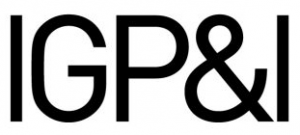Gard was recently advised of machinery damage onboard a vessel trading in one of the MARPOL designated Emission Control Areas (ECAs). The vessel had bunkered 0.10 per cent sulphur fuel into a tank that had previously carried heavy fuel oil (HFO). The incident may have arisen because the newly bunkered fuel was contaminated by HFO residues/deposits in the tank.

Cleaning of tanks for low sulphur fuels
Published 18 March 2015
Stricter air emission limits (MARPOL Annex VI) entered into force on 1 January 2015 and the majority of vessels are now switching to fuel oil containing maximum 0.10 per cent sulphur prior to entering an ECA. Passage through an ECA can last for a longer period of time and vessels not equipped with sufficient storage capacity for ECA compliant fuel may therefore need to free up additional tank space. If a tank previously used to carry HFO has not been professionally cleaned, a contamination of bunkered ECA compliant fuel with HFO residues/deposits can occur. This could lead to non-compliance, unsatisfactory engine operation or, as in this case, a major engine break down.
It is important to remember that:
Some of the ECA compliant fuels can have a cleaning effect on, for instance, storage tanks and is likely to dislodge and carry existing fuel oil deposits that have built up over time and are present in the tank. See the best practice sheetissued for the new fuel category “ExxonMobil Premium HDME 50” as an example.
ECA compliant fuels loaded into tanks or through lines that have previously contained fuel with a higher sulphur content may become non-compliant. These fuels may be supplied with a sulphur content very close to the 0.10 per cent ECA sulphur cap and even very small admixtures with other higher sulphur fuels could therefore result in the fuel not being compliant.
RecommendationsAdvanced planning and preventive maintenance are critical to the proper operation of a vessel’s main engine and to prevent damage and loss of propulsion. Members and clients with vessels switching between different fuel grades in order to comply with the ECA requirements are therefore advised to pay attention to cleanliness and overall suitability of fuel tanks and transfer lines, particularly if bunkering into a tank that has previously carried high sulphur HFO.
Other relevant news and recommended reading on ECA operation:
DNV-GL Technical Update No.3 “Notice for low sulphur, “hybrid” fuel operation” of March 2015
USCG Marine Safety Bulletin No. 02-15 “New emission control area (ECA) sulphur cap started January 01, 2015” of 10 March 2015
Gard Alert “US Coast Guard - low sulphur fuel issues” of 4 March 2015
EU Commission Implementing Decision 2015/253 concerning “The sampling and reporting as regards the sulphur content of marine fuels” of 16 February 2015
Gard Loss Prevention Circular No. 06-14 “Preparing for low sulphur fuel operation” of 19 December 2014
Veritas Petroleum Services Circular “Getting ready for hybrid fuels” of 8 December 2014


